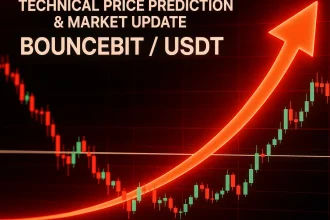The cryptocurrency landscape has experienced significant developments over the past week, marked by regulatory advancements, market fluctuations, and strategic initiatives by both governmental and private entities. This digest provides an in-depth analysis of these pivotal events shaping the digital asset ecosystem.
Regulatory Milestones and Policy Shifts
In a landmark decision on September 18, 2025, the U.S. Securities and Exchange Commission (SEC) approved rule changes that streamline the approval process for spot cryptocurrency exchange-traded funds (ETFs). This regulatory shift allows major exchanges such as the NYSE, Nasdaq, and Cboe Global Markets to adopt generic listing standards for digital asset ETFs, reducing the approval timeline from up to 240 days to as little as 75 days. This move is anticipated to facilitate the listing of ETFs tied to cryptocurrencies beyond Bitcoin and Ethereum, including assets like Solana and XRP. Industry stakeholders view this as a significant step toward integrating digital assets into mainstream financial markets.
Complementing this development, the SEC unveiled its agenda to revamp cryptocurrency policies and ease compliance burdens for Wall Street. The proposed framework aims to establish clearer rules for the offer and sale of digital assets, introduce potential exemptions and safe harbors, and clarify how cryptocurrencies fit within existing broker-dealer frameworks. This initiative reflects a broader strategy to modernize financial regulations and promote market efficiency, aligning with the current administration’s pro-crypto stance.
Market Dynamics and Price Movements
The cryptocurrency market has exhibited notable volatility in recent days. Bitcoin (BTC) experienced a decline of approximately 4%, trading at $99,237 as of June 22, 2025. This downturn is part of a broader market fluctuation affecting major cryptocurrencies. Ethereum (ETH) also saw a significant drop, falling by approximately 8.52% to $2,199. These movements underscore the inherent volatility of the crypto market and the influence of macroeconomic factors on digital asset valuations.
As of September 22, 2025, Bitcoin is trading at $114,422, reflecting a slight decrease after briefly reaching $115,000. This price movement indicates a period of consolidation, with market participants closely monitoring regulatory developments and macroeconomic indicators for future direction.
Strategic Initiatives and Institutional Involvement
The U.S. government’s proactive approach to cryptocurrency is further exemplified by the establishment of the Strategic Bitcoin Reserve. Announced in March 2025, this reserve aims to maintain government-owned Bitcoin as a national reserve asset, signaling a commitment to integrating digital assets into the nation’s financial strategy. The reserve is capitalized with Bitcoin already owned by the federal government, positioning the United States as the largest known state holder of Bitcoin globally.
In the private sector, Eric Trump, son of President Donald Trump, is set to visit Tokyo in September to attend a shareholder meeting of the Japanese Bitcoin treasury company Metaplanet. His involvement underscores the increasing intersection between political figures and the cryptocurrency industry, reflecting a broader trend of institutional engagement with digital assets.
Conclusion
The past week has been pivotal for the cryptocurrency sector, marked by significant regulatory advancements, market fluctuations, and strategic initiatives by both governmental and private entities. The SEC’s streamlined approval process for spot cryptocurrency ETFs and the establishment of the Strategic Bitcoin Reserve highlight a concerted effort to integrate digital assets into the mainstream financial system. Meanwhile, market volatility continues to present both challenges and opportunities for investors. As the landscape evolves, stakeholders must remain vigilant, adapting to regulatory changes and market dynamics to navigate the complexities of the digital asset ecosystem effectively.






